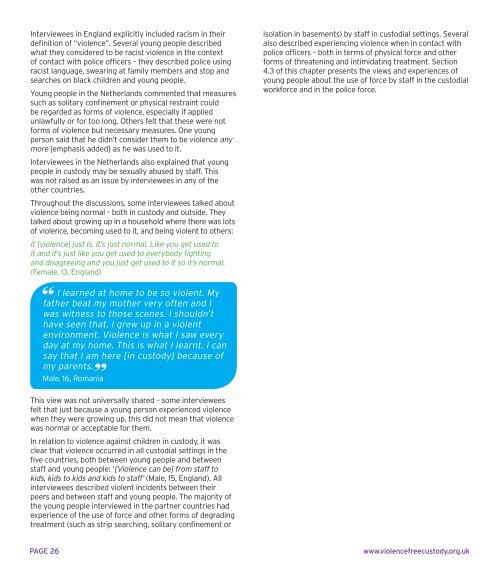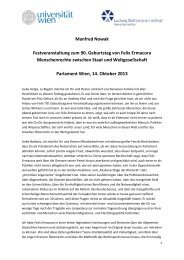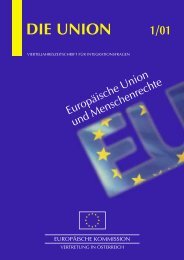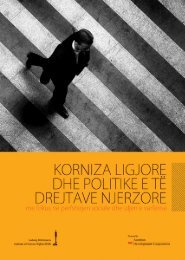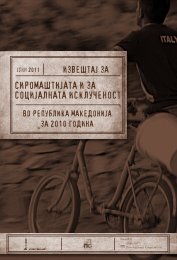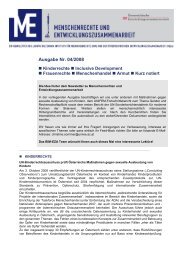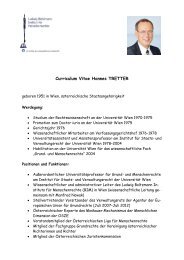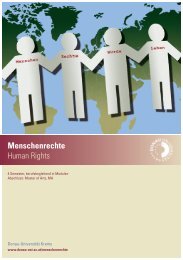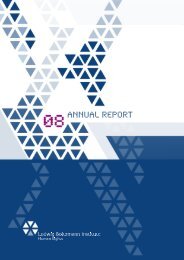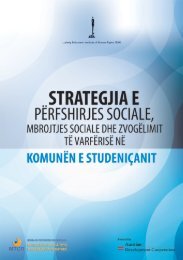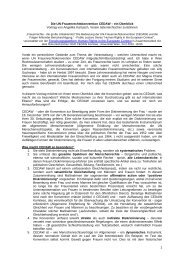speaking freely - 404 Page not found
speaking freely - 404 Page not found
speaking freely - 404 Page not found
You also want an ePaper? Increase the reach of your titles
YUMPU automatically turns print PDFs into web optimized ePapers that Google loves.
Interviewees in England explicitly included racism in their<br />
definition of “violence”. Several young people described<br />
what they considered to be racist violence in the context<br />
of contact with police officers – they described police using<br />
racist language, swearing at family members and stop and<br />
searches on black children and young people.<br />
Young people in the Netherlands commented that measures<br />
such as solitary confinement or physical restraint could<br />
be regarded as forms of violence, especially if applied<br />
unlawfully or for too long. Others felt that these were <strong>not</strong><br />
forms of violence but necessary measures. One young<br />
person said that he didn’t consider them to be violence any<br />
more [emphasis added] as he was used to it.<br />
Interviewees in the Netherlands also explained that young<br />
people in custody may be sexually abused by staff. This<br />
was <strong>not</strong> raised as an issue by interviewees in any of the<br />
other countries.<br />
Throughout the discussions, some interviewees talked about<br />
violence being normal – both in custody and outside. They<br />
talked about growing up in a household where there was lots<br />
of violence, becoming used to it, and being violent to others:<br />
It [violence] just is. It’s just normal. Like you get used to<br />
it and it’s just like you get used to everybody fighting<br />
and disagreeing and you just get used to it so it’s normal.<br />
(Female, 13, England)<br />
isolation in basements) by staff in custodial settings. Several<br />
also described experiencing violence when in contact with<br />
police officers – both in terms of physical force and other<br />
forms of threatening and intimidating treatment. Section<br />
4.3 of this chapter presents the views and experiences of<br />
young people about the use of force by staff in the custodial<br />
workforce and in the police force.<br />
I learned at home to be so violent. My<br />
father beat my mother very often and I<br />
was witness to those scenes. I shouldn’t<br />
have seen that. I grew up in a violent<br />
environment. Violence is what I saw every<br />
day at my home. This is what I learnt. I can<br />
say that I am here [in custody] because of<br />
my parents.<br />
Male, 16, Romania<br />
This view was <strong>not</strong> universally shared – some interviewees<br />
felt that just because a young person experienced violence<br />
when they were growing up, this did <strong>not</strong> mean that violence<br />
was normal or acceptable for them.<br />
In relation to violence against children in custody, it was<br />
clear that violence occurred in all custodial settings in the<br />
five countries, both between young people and between<br />
staff and young people: ‘[Violence can be] from staff to<br />
kids, kids to kids and kids to staff’ (Male, 15, England). All<br />
interviewees described violent incidents between their<br />
peers and between staff and young people. The majority of<br />
the young people interviewed in the partner countries had<br />
experience of the use of force and other forms of degrading<br />
treatment (such as strip searching, solitary confinement or<br />
PAGE 26<br />
www.violencefreecustody.org.uk


